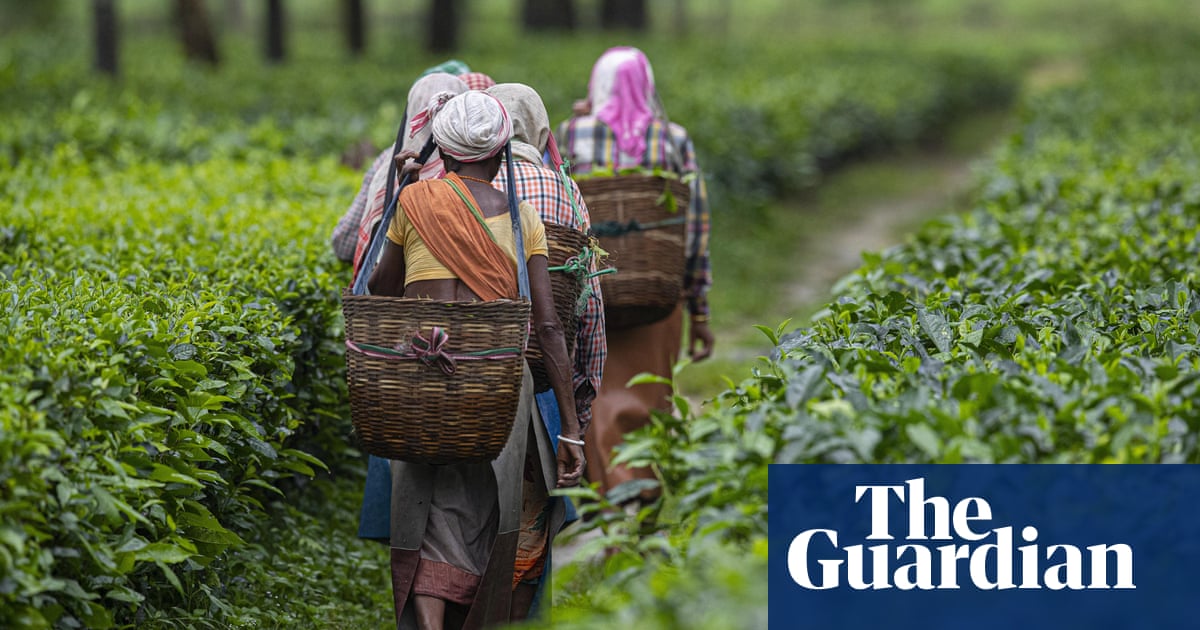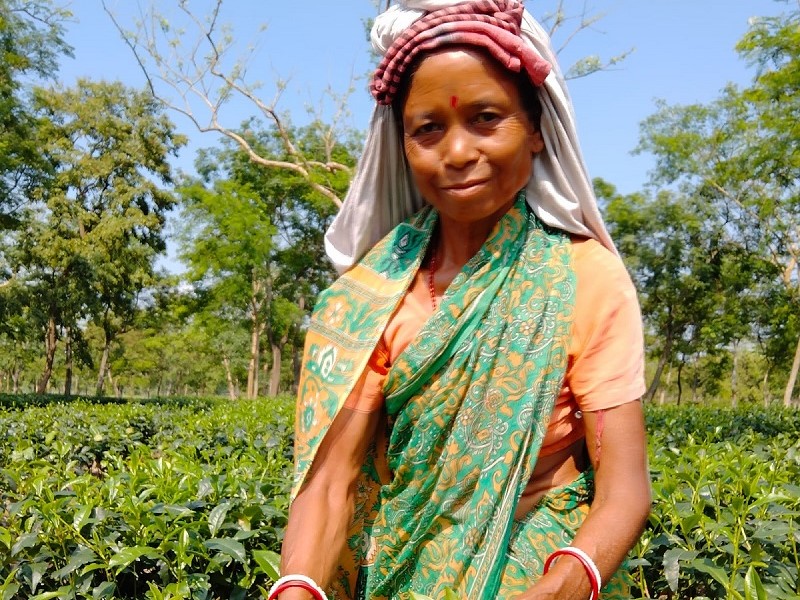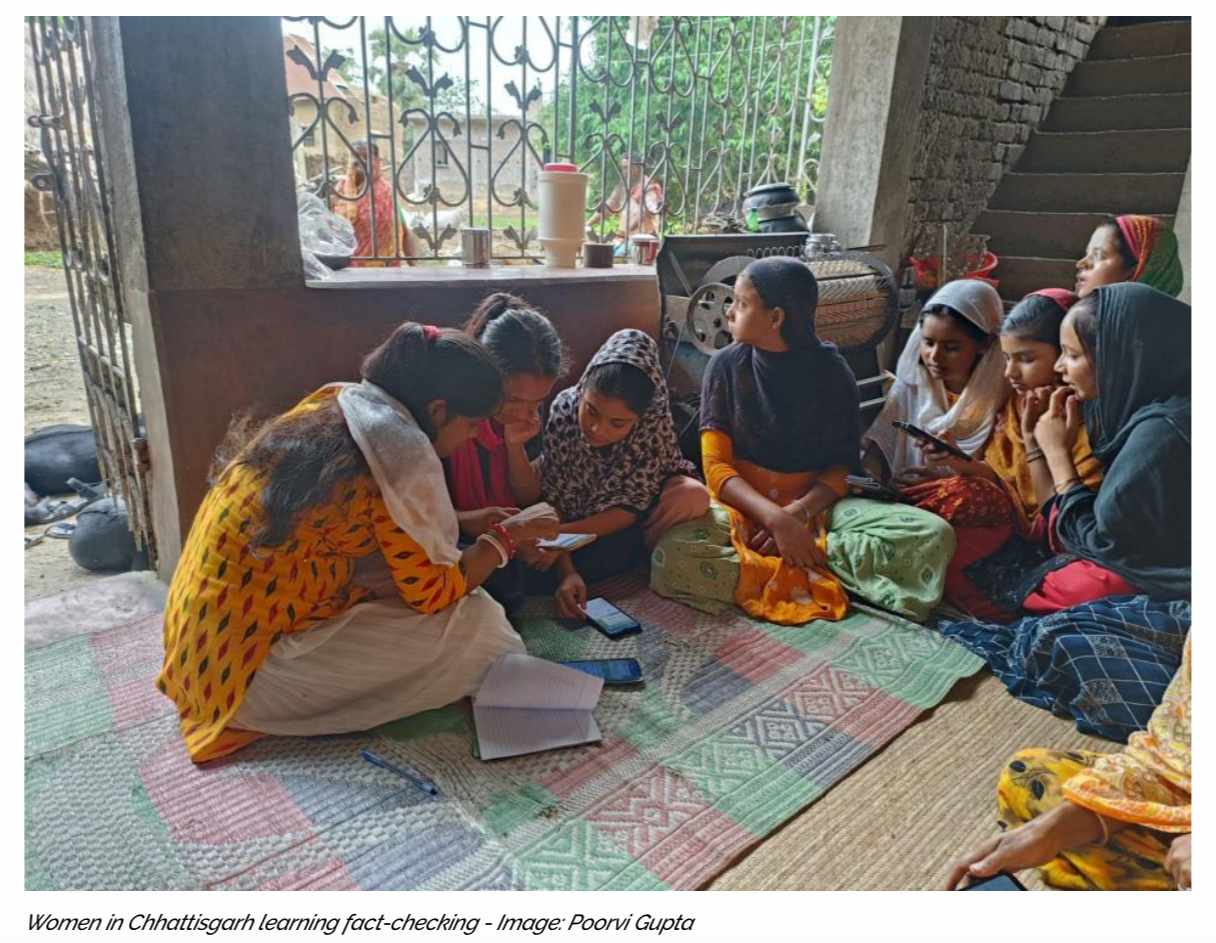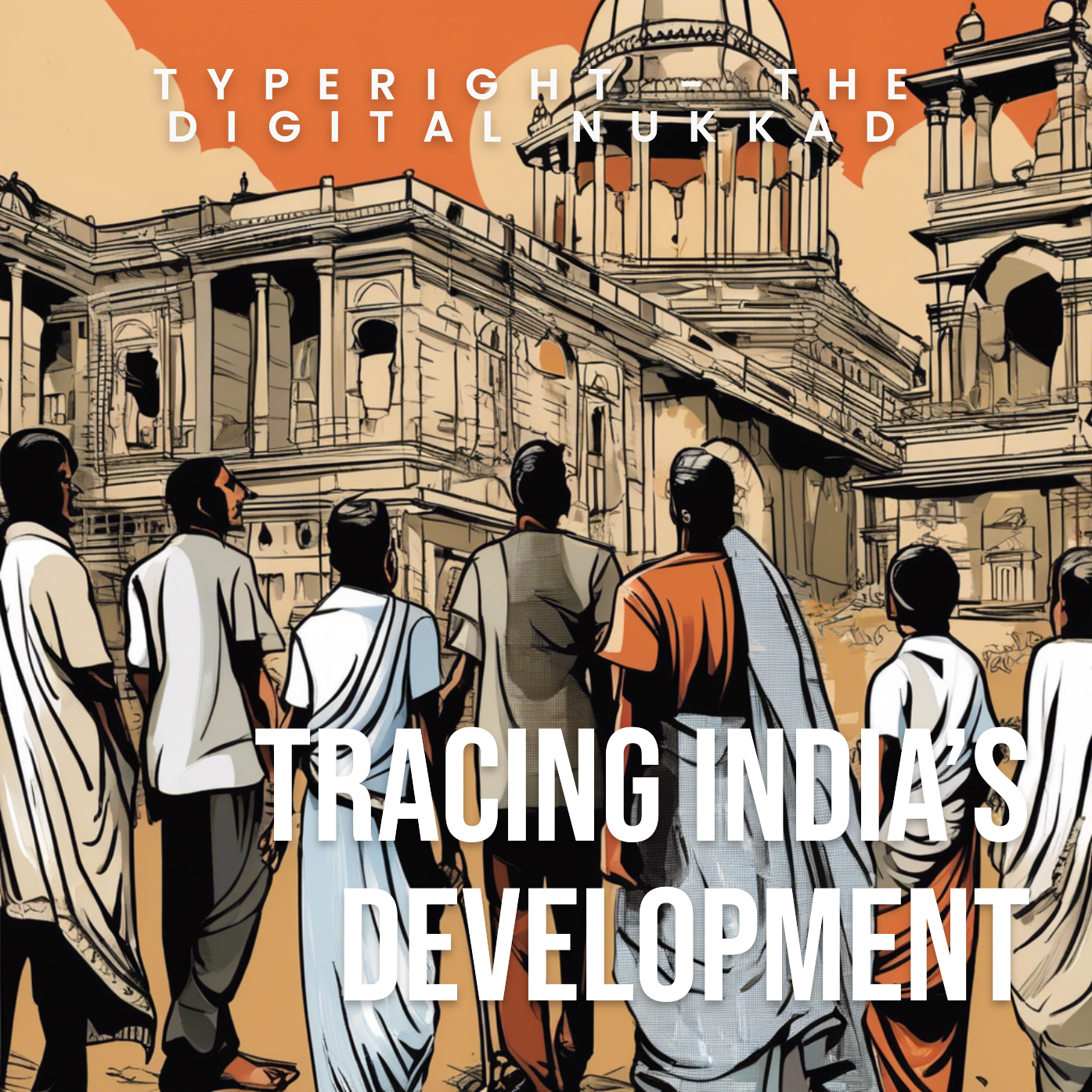
Last Sunday, the 21st of May, is marked and celebrated as International Tea Day. This comes after a UN resolution in 2019, reaffirming the 2030 goals for sustainable development, and taking into account the cultural and economic importance of tea, and aiming to improve labour conditions and impact to the environment. But what exactly does International Tea Day mean to the colonial legacy of the tea plantations, and the living conditions of the communities who labour there? We are learning from the hard ground realities of the tea plantation workers amidst this digital era of extraordinary exclusion. Some digital experiments of connecting the unconnected are showing long lasting changes and impacts.
After all, Tea is the second most preferred beverage worldwide, second only to water. A 2021 statistic pegs the global production of tea at almost 6 million tonnes (5,966,467 to be exact) a year. Although a slightly older statistic, this infographic by IIP using the 2011-12 NSS data puts a +91% preference for tea over coffee in India.
This statistic is not very surprising, and undoubtedly, Indians would agree that tea is more than any ordinary drink; it is part of an emotion, and to many others across Asia, it is a part of their culture, tradition and heritage. But if we go back to the beginning of the last century, this was hardly the case. As the Assam government celebrates 200 years of Assam Tea this year, we take a step back and look at the history of the crop.
Almost exclusive to China, tea was, until the 19th century, mostly traded along the silk route from China to the rest of west Asia, along with porcelain and silk. It became, along with several spices, one of the key drivers of European trade only around the 18th-19th centuries. As the European colonial powers established their bases (of trade and later dominance) in India and other East Asian Islands, they tried to look for other sources of the precious leaf, as they were accumulating trade deficits with China. This was how the British looked towards its newly acquired colonial lands to try and satisfy the growing demand in European markets. Historians also argue that the opium wars were Britain's way of balancing their trade deficits on tea, by getting the Chinese hooked onto opium, and increase British India's exports of the drug to China. According to a BBC article,
"The result was a far stronger, and far more addictive, hit. By the turn of the 20th Century, Britain had become the biggest drug dealer the world had ever known, and China had developed the biggest drug problem experienced by any nation ever. According to official figures, in 1906, 23.3% of the adult male Chinese population was addicted to opium."
This was, however, because the Chinese had almost made tea's cultivation and production practices a trade secret, and once the British finally managed to start growing tea in Assam around the 1830s, they worked their way through the acquired land in the empire-building plantations in multiple places. With slavery being (technically) banned in the British empire, the officials in India turned to indentured labour, which were reportedly not much better than slavery. It is a practice that has its remnants today as well. Driven almost literally on slave labour, in around seventy years, vast swathes of land of the Himalayas were deforested, denuded, and replaced with tea.
The vast expanses of lands needed to establish plantation estates necessitated extensive deforestation of the Darjeeling Himalayas as well as the forests of the Dooars. In addition to disrupting the regional ecological balance, this large-scale deforestation also impacted the forest-dependent regional Indigenous tribes such as the Lepcha, Rabha, and Mech who were accustomed to hunting-gathering and shifting cultivation for their livelihoods. Moreover, tribal lands were turned into state property and subject to taxes. The emergence of plantations led to the immigration of primarily Nepali people into the Darjeeling district, and Nepali as well as tribal (Oraon, Santhal, and Munda) communities into the Dooars, to work as laborers in the tea estates. Indigenous communities in the region approved neither of the establishment of plantations nor the resettlement of immigrants by the imperialist planters in the service of progressive destruction of their cherished forests. The steady rise in population due to such migrations led to increased competition over the already dwindling resources of these areas. The British government acquired lands forcibly from Indigenous communities to set up tea estates and resettle immigrants on them permanently. The new settlers took to plough cultivation in the Dooars after being encouraged by British administrators, further augmenting deforestation in the region. (Source)
This is how, as the following video from British Pathe archives shows, India surpassed China to become the largest producer of Tea at one point in history (until very recently).
The story of ecological and human disasters, from deforestation of ecologically sensitive land, to displacing indigenous communities and their livelihoods is not different in other parts of the empire, from the Western Ghats to Sri Lanka. As this article puts it, the entire industry has, and still does sustain 'the ghost of colonialism'.
Of course, at one point in time, the drink moved from its position of a status drink of the high societies of Europe, to something the common European could also enjoy, and later marketed to its domestic markets (in south Asia), as something the common Indian, Bangla, or Lankan could enjoy. It moved out of the tea rooms and cafes into more Indian homes and streets. The great depression in the 1930s helped this push along, as did local additions and variants to the drink that made it more palatable and economical.

Tea quickly climbed its way down the social ladder and to the heart of India's culture.
Markets aside, what does this mean for the producers? For India's 'National Drink,' consumed by over 850 Million people daily, and adding close to $500 Million to the country's export balances, the workers, in turn, are paid close to pittance wages. While the advertisements showed (and still do!) women plantation workers happily plucking leaves against idyllic, picturesque backgrounds, the reality is far from it.
Oxfam-commissioned researchers found that permanent workers across the districts studied are paid a cash component of between INR 137 and INR 170 (€1.78–€2.21) a day. Private plantations pay INR 167 per day, but the state-owned tea estates pay as low as INR 137. As already mentioned, this is well below the minimum wage level for unskilled agricultural workers. Given this, 50% of the households visited owned ‘below poverty line’ ration cards issued by the Government of Assam [...] official acknowledgement that tea workers do not earn enough to survive on. (source)
For most of the tea plantations in India, from the western Ghats to the Assam hills, work is close to bonded labour. But how exactly? In the plantations of Valparai, as shown in the video above, or the Kannan Devan Tea plantations of Munnar in Idukki, (just as well with most of those in Assam) a large majority of the labourers would come from the Tribal Population, having been displaced and forced into the line of work for generations following the British Empire/East India Compay's destruction of large swathes of forests (which had been their primary livelihood) to tea plantations. The videos above also highlight the living conditions and, importantly, the ownership of land. While thousands and thousands of hectares of estate land is owned by tea companies, they provide only shabby, one-room housing to the plantation workers - also conditional, in that as soon as the family ceases to have a worker in the plantation, they would also lose the housing. This gives a basic sense of why generation after generation, a plantation worker would have little choice in finding a different source of work.
Making matters even more complicated is that many of the tea plantation workers in Assam do not even receive their benefits - as they are sometimes not indigenous to the state, or not counted as scheduled tribes by the government. A report from OXFAM and People's Archive of Rural India states that over 750,000 of the workers there were brought from central India, mostly tribal populations, to work in the plantations there.
The lack of wages, and access to social and other infrastructure leads to compounding problems. Most of the tea garden workers suffer from rampant hunger, poverty and unemployment, problems like illiteracy, drop-out, malnutrition, and various incurable diseases combined with the effect of vulnerabilities of trafficking of children and women in particular are prevalent.
Of course, this is not without resistance. On one side, there have been demands for including the communities under the ST list, so that they get better state benefits, including representation and reservation.
Otherwise, there have been several workers protests across Siliguri, Darjeeling, Assam, and Munnar, just to name a few, for better wages, living conditions and even for land.
(More detailed sources for the above sections are available here, here, here, and here)
This was just a reminder that every daily food, drink or object from tea to spice to the silicon has history of victims, of both colonialism and crony capitalism. This is not everyone's cup of tea, and wasn't meant to ruin your cup of tea, but to bring attention to some work we at the Digital Empowerment Foundation have been doing at the tea gardens of Assam and North Bengal, to support the community of people behind the country's favourite drink. Now, it is important to note that the issue is deeply rooted within a lot of colonial and feudal structures of power, and change is far from easy. While on one hand, the communities themselves and the unions the labourers form are pushing for better living conditions, our work contributes a small part in enabling the communities to access their basic entitlements. This is also not to say that there has been little being done - there are some government schemes, however they remain out of access to most. Most of our work is presently focused in Assam, the largest tea producing state in India, while we also plan on expanding our work across the country.
With the digital seeping into every means of accessing entitlements as basic as ID cards and rations to means for better education that enables people a way of upliftment from their situation, the lack of connectivity in the hilly regions of Assam becomes challenging. Deprivation from information is one of the several missing parts of the puzzle, and one that stems from the same colonial remnants of exclusion and neglect - no one has bothered to connect the communities at the margins.
We looked into what prevented the Assam communities from accessing their entitlements. From the report, illiteracy (which is as high as 70%), information and digital illiteracy (at higher levels) and poverty, lack of bank accounts were the key factors we discovered from our interactions. "We have to go to work daily or else we do not get our wages and other benefits like ration." According to one respondent, "We cannot go to office and get our work done in one day and we cannot go again and again or else we lose our wages and income for living. And who will give money for our travel?” As for infrastructure for the same, there is close to none, coupled by institutional apathy. "The administrative challenge with the volume of beneficiary targets and volume of applications which are processed manually and the lack of human and operational resources to manage targets and schemes have contributed to gaps in quality for applying, demand and uptake for schemes and benefits."

To start with, take a look at our Internet Roshni Project, featured on last year's CNX (Community Network Exchange). There have been several years, if not decades of promises made to the communities of the tea-tribes here, but they have been rarely fulfilled. With our Internet Roshni project that connected fifty tea gardens across five districts in Assam through internet centers run by rural entrepreneurs through Community Networks, we have digitally empowered several people.
Most workers live on tea farms in secluded, rural areas that lack Internet connectivity. Many from the communities have to sacrifice their daily wages and travel all day to a nearby town to access the Internet and do things they can’t complete on their mobile phones. Besides providing connectivity to over 25,000 households, the centres under the project also provide digital skills trainings and enables the communities to access critical digital social and economic services.
This thread by Maiko Nakagaki from ISOC foundation explains in detail with pictures from her visit:
And we have attained great success in the areas where we have intervened. This is when DEF's Abner had visited the plantation recently:
We hope to continue and expand our endeavours and connect more communities in Assam and beyond!
In Other News
Digitised land records, while needing some more streamlining, has helped save time and resources for revenue departments.

Remember clubhouse? It may have lost its urban popularity after the pandemic lockdowns, but farmers are finding it very useful for both price information, and as a support system.

Nuh, Haryana has been a cybercrime hotspot, with several financial cyber frauds centered here:

This is while google has kicked out several suspicious loan applications, that were both resorting to fraud and unsafe data practices.

Google's ban of apps may be justified, but the same does not bode for the government, which also banned fourteen apps, some open source and compliant to safe communication practices:
Internet in strife-struck Manipur has been out for over three weeks now, reports say. This has restricted transfer of money, and information to and from the area, to survivors of the violence.
What's up at DEF?
First, check out some recent updates from Assam, under the Internet Roshni Project
Some glimpses from STEM classes in Jharkhand:
We also held a fun Mango Party in Mysore!
We are now accepting applications for Cohort Two of the year-long fellowship program, Digital Swaraj, scheduled from July 2023 to June 2024.
And finally, don't forget to check out the winners of the writing contest on Digital Access for Students:
That's all for the week! A reminder to stay hydrated as the temperatures soar!

























 might be?](https://sk0.blr1.cdn.digitaloceanspaces.com/sites/1394/posts/714526/dbc8de4c-5c50-411f-aba0-55cfb74a692d.jpeg)

Write a comment ...